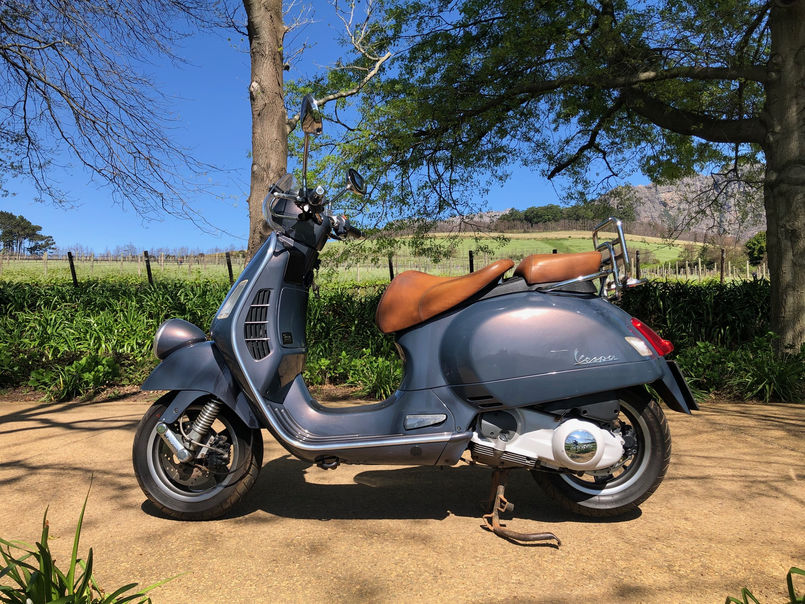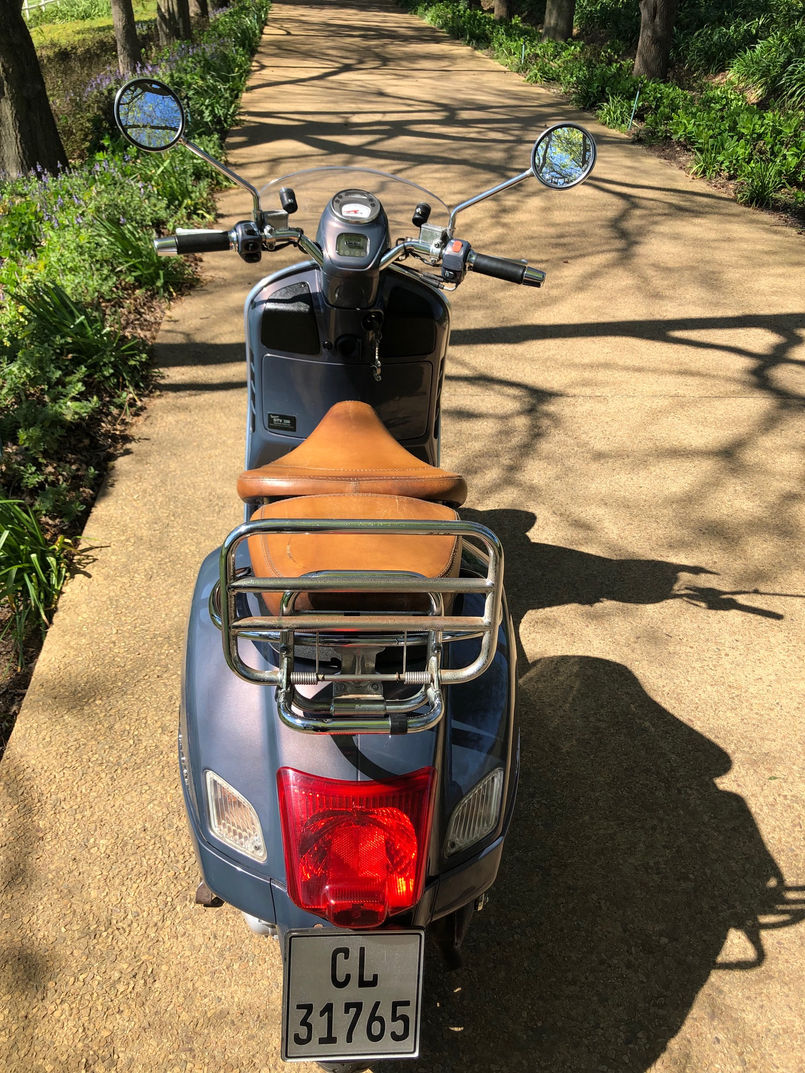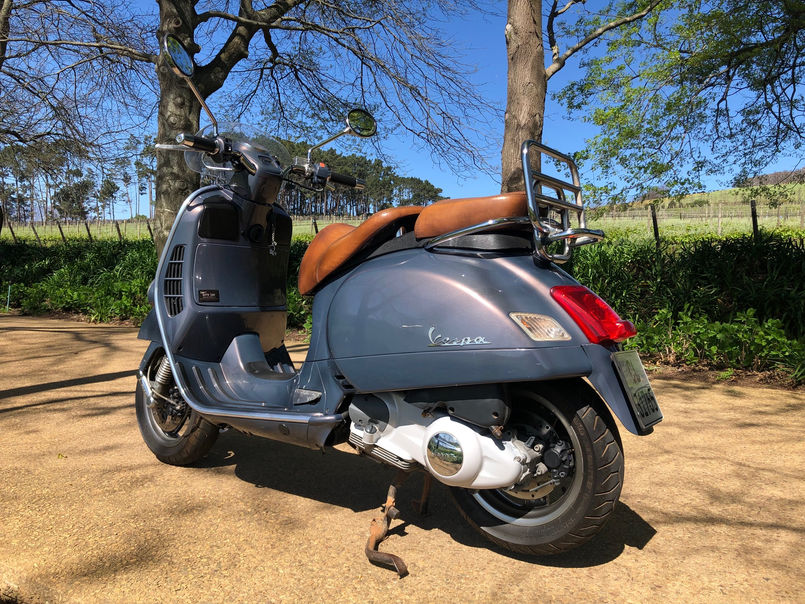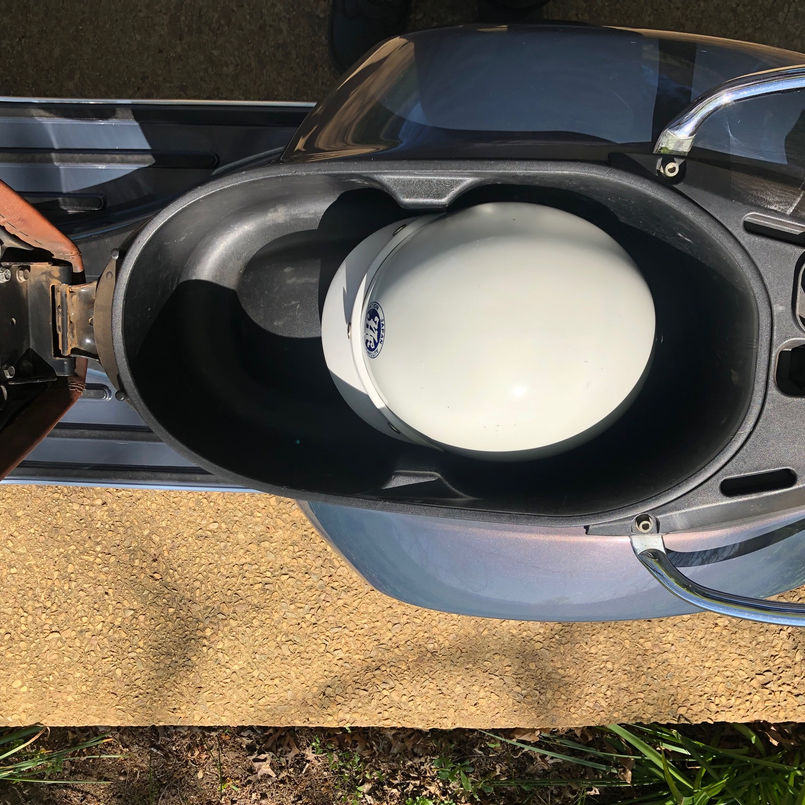
26 Sep On yer bike: Vespa
FMM Curator Wayne Harley’s scoots off into history on a Vespa, which owes its existence to an Italian who disliked motorcycles…
Enrico Piaggio was an aeronautical engineer who after WW2 realised that people would need a cheap and simple mode of transportation. However, he disliked motorcycles, finding them to be bulky and dirty to ride on, which forced him to think differently. Thanks to his background in the aircraft industry, he redesigned the motorcycle to eliminate what he found to be bulky, dirty and unpleasant and effectively created the world’s first scooter. He accomplished this by moving the engine under and slightly behind the rider, thus eliminating open, oily chain drives, and cocooned the engine within pressed-steel bodywork, effectively doing away with pipe steel framework. This allowed the rider to now keep feet inboard of the vehicle, in so doing adding protection against dust and dirt. And so the Vespa was born (Vespa is Italian for wasp). It was a very successful design and an almost instant hit.
Over the years, Vespas have been upgraded and improved but in essence remaining true to the original. It is claimed that since April 1946 more than 18 million units have been produced and sold. Vespa has been accepted into popular culture and is still seen as contributing to a fun loving, carefree lifestyle, the high point of which must have been in the late 1950s with the ‘mods’ (as opposed to the motorcycling ‘rockers’) movement in Britain, when well-dressed and stylish ‘modern’ youngsters used the scooter as not only transport but a fashion statement.
But since its inception, Vespa has moved from cheaply and effectively moving people around tight city metros to become a brand associated with style and panache and simply living ‘la dolce vita’. So in 2006 when Piaggio produced a commemorative unit to celebrate its 60th year of production, the company drew inspiration from the original but with all the style, luxury and upgrades that come with being a top Italian brand. Piaggio produced only 1000 GT60 250 as numbered special editions, but along with this they also released our test machine for this month, the Vespa 250 GTV. It is, in fact, almost the same scooter as the GT60 but without the equivalent special paint finish, commemorative gift set and individual number badging.
However, the rest is an exact duplicate of the GT 60, the same beautifully-finished leather twin seat, naked chrome handlebars, headlight positioned down on the front fender, retro analog clocks and its own iridescent metallic grey paint scheme, making this, even by today’s standards, still one of the most aesthetically pleasing Vespas around. Also, the Vespa’s ergonomics are still amazingly good, the riding position as always sitting upright and very comfortable with great visibility and mirrors nicely positioned. Instruments on the handlebars are simple and easy to read. This 250 GTV also boasts lots of storage space under the seat and in the fender mounted cubbyhole, and is fitted with a retro-style folding chrome carrier behind the pillion seat.
Riding the Vespa is a pleasure provided you stay in the urban confines where it is still king and does everything with ease. It is not really a highway machine and I wouldn’t recommend touring on a Vespa, although it has been done on many an occasion. I found it very twitchy at speed (120 km/h), which could be down to the small 12-inch wheels, or that Vespa still produces one of the shortest wheelbase scooters in this class at 1 395 mm. Overall length is 1 930 mm.
The little 244 cm3 four-stroke, s-o-h-c, 4-valve, single-cylinder engine has more than enough grunt with 16 kW at 8 250 r/min and 20 N.m of torque at 6 500 r/min. As I discovered in Franschhoek, this will easily get you up any steep hill even with a pillion passenger and a bag or two if you’ve been shopping. To top it all, the GTV is fully automatic, making town commuting a doddle, and the 220 mm single disc brakes front and rear easily bring you to a stop – even if some inattentive tourist steps out in front of you… The Vespa is relatively light at 151 kg and easy to handle, and does not require too much physical effort to operate.
In general, I’ve never been a big scooter fan but must confess that the Vespa does deserve a special place in the annals of motorcycle history. As Sir Alec Issigonis changed the car industry with his Mini, so Enrico Piggio gave the world a practical and cost effective means of transport that is still in production today. The GTV 250 special edition is a rather good example of the modern retro and shows that Vespa has managed to keep that carefree commuting feeling alive. The sad part is that the pricing of this little gem has changed its role from simple transportation to a lifestyle fashion accessory…
(Thanks to Garth Robertson of Anthonij Rupert Wines for the loan of his rather special Vespa.)






